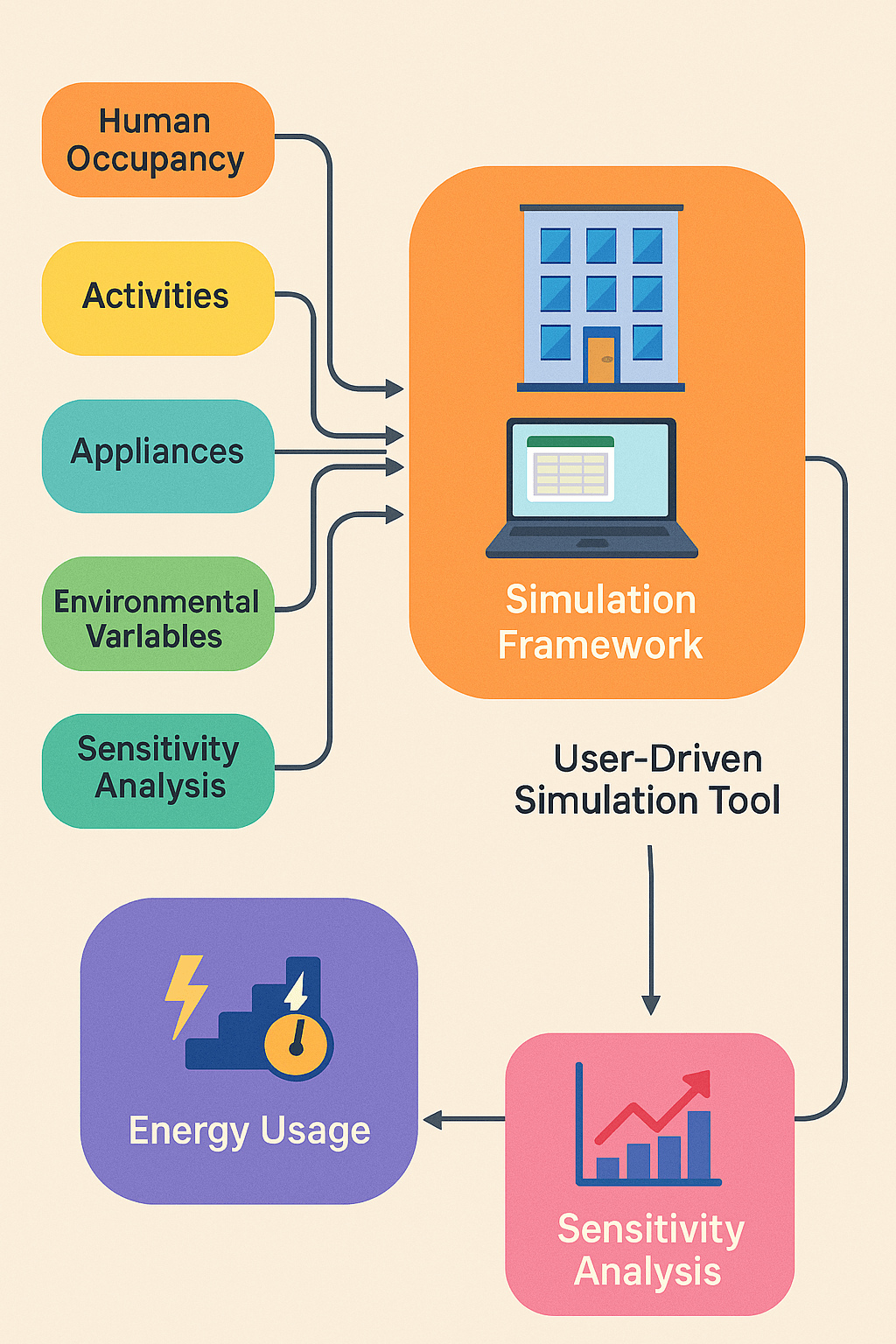 Open Access
Open Access
ARTICLE
Occupancy Based Building Energy Analysis Using Discrete Event Simulation
1 Amazon.com Services LLC, Seattle, WA 98109, USA
2 Industrial and Management Systems Engineering, West Virginia University, Morgantown, WV 26505, USA
* Corresponding Author: Bhaskaran Gopalakrishnan. Email:
Energy Engineering 2025, 122(7), 2931-2956. https://doi.org/10.32604/ee.2025.064887
Received 26 February 2025; Accepted 20 May 2025; Issue published 27 June 2025
Abstract
Highly energy-efficient buildings have generated remarkable interest over the last few years. There is a need for simulation based effective control systems for efficient usage of electrical and fossil fuel driven devices, as they contribute to energy-efficient buildings and assist in gaining flexibility for the human occupancy-based energy loads. In this context, the integrated energy profile of a building can be ascertained by effective research approaches, as this knowledge would be beneficial to understand the demographics with respect to human occupancy and activities, as well as estimate varying energy consumption over time. Utility data from Smart Meter (SM) readings can reveal detailed information that could be mapped to predict resident occupancy and the usage patterns of specific types of appliances over desired time intervals. This research develops a user-driven simulation tool with realistic data acquisition options and assumptions of potential human behavior to determine energy usage patterns over time without the utility billing information. In this work, factors such as level of human occupancy, the possibility of space being occupied, thermostat settings, building envelope infrastructural aspects, types of appliances used in households, appliance energy related capacities, and the probability of using each appliance is considered, along with variance in weather, and heating-cooling systems specifications. For five specific benchmarked scenarios, the range of the random numbers is specified based on assumed potential human behavior for occupancy and energy-consuming appliances usage probabilities, with respect to the time of the day, weekday, and weekends. The simulation is developed using the Visual Basic Application (VBA)® in Microsoft Excel®, based on the discrete-event Monte Carlo Simulation (MCS). The simulated energy usage and the cost are reflected in the sensitivity analysis by comparing factors such as the level of human occupancy, appliance type, and time intervals.Graphic Abstract

Keywords
Cite This Article
 Copyright © 2025 The Author(s). Published by Tech Science Press.
Copyright © 2025 The Author(s). Published by Tech Science Press.This work is licensed under a Creative Commons Attribution 4.0 International License , which permits unrestricted use, distribution, and reproduction in any medium, provided the original work is properly cited.


 Submit a Paper
Submit a Paper Propose a Special lssue
Propose a Special lssue View Full Text
View Full Text Download PDF
Download PDF Downloads
Downloads
 Citation Tools
Citation Tools